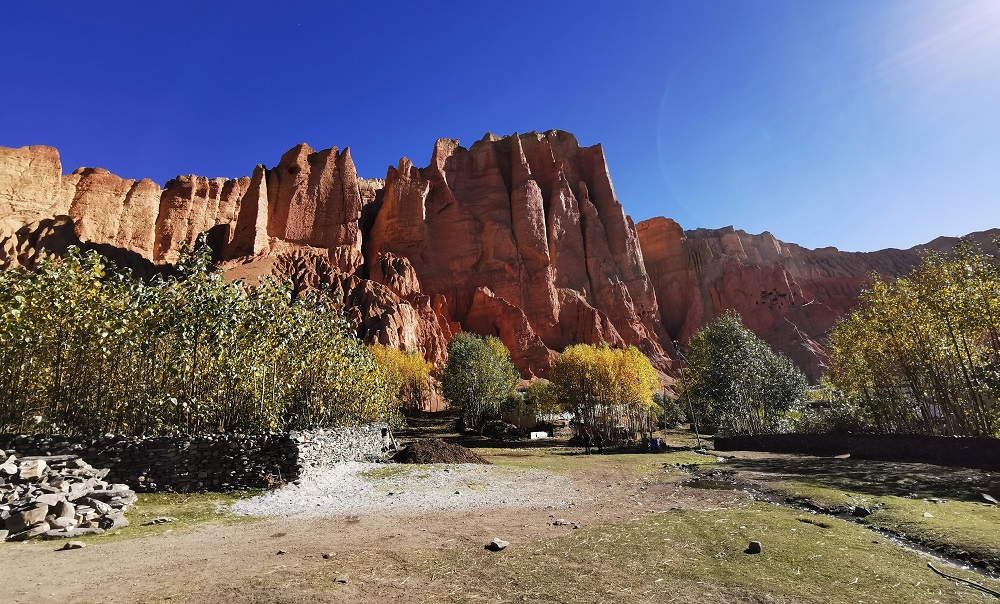Interesting things about Dhakmar Village | All you need to know about Dhakmar in Upper Mustang
Dhakmar is a small village located in the Mustang District of Nepal. Mustang, also known as the Kingdom of Lo, is a remote and culturally rich region in the Himalayas. Dhakmar is situated in the upper part of the Kali Gandaki Valley, at an elevation of around 3,810 meters (12,500 feet) above sea level.
Here are some key features and information about Dhakmar:
1. Geography:
Mustang is located in the north-central part of Nepal, bordering Tibet (China) to the north. The region is situated in the rain shadow of the Annapurna and Dhaulagiri mountain ranges, resulting in a unique arid and semi-desert landscape. Dhakmar, specifically, lies in the upper region of the Kali Gandaki Valley, which is known for its deep gorges and towering cliffs. The red cliffs of Dhakmar are a prominent feature of the village and add to the rugged beauty of the area.
2. Culture and Heritage:
The culture of Mustang is heavily influenced by Tibetan Buddhism. The region was historically a part of the Tibetan Empire and has maintained close ties to Tibetan traditions and practices. Dhakmar is home to several ancient monasteries, including the Namgyal Monastery and the Niphu Monastery. These monasteries house intricate murals, thangkas (religious paintings), and sacred artifacts, showcasing the rich Buddhist heritage of the region. The people of Dhakmar, like in other Mustang villages, primarily belong to the Loba community, who have preserved their Tibetan customs, language, and way of life.
3. Red Cliffs and Caves:
The red cliffs of Dhakmar are a natural wonder that draws visitors to the area. These cliffs are composed of sedimentary rocks that contain a high concentration of iron oxide, resulting in their distinctive red color. Over time, wind and water erosion have sculpted the cliffs, creating unique patterns and formations. Some parts of the cliffs have eroded to form cave-like structures, which were historically used by Tibetan monks for meditation and spiritual retreats. Exploring these cliffs and caves offers a glimpse into the geological history of the region.
4. Mustang Trekking:
The Mustang region, including Dhakmar, is a popular destination for trekkers seeking a unique and off-the-beaten-path experience. The trekking route from Kagbeni to Lo Manthang takes travelers through the picturesque landscapes of the Kali Gandaki Valley, with Dhakmar serving as a notable stopover. The trek offers breathtaking views of snow-capped peaks, including Nilgiri, Tilicho, and Annapurna, as well as the mesmerizing beauty of the Mustang region. Along the way, trekkers can visit ancient monasteries, encounter traditional Tibetan villages, and immerse themselves in the rich cultural heritage of the area.
5. Conservation and Permits:
Mustang is a restricted area for tourism to preserve its fragile ecosystem and cultural integrity. To visit Dhakmar and other parts of Mustang, travelers need to obtain a special permit called the "Mustang Restricted Area Permit." This permit, in addition to the Annapurna Conservation Area Permit (ACAP) and Trekkers' Information Management System (TIMS) card, helps regulate the number of visitors and ensures responsible tourism practices. The conservation efforts aim to protect the unique natural and cultural treasures of Mustang for future generations.




.jpg)



